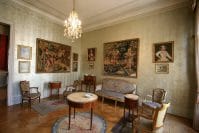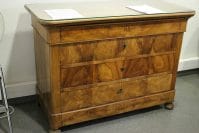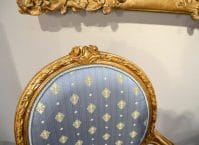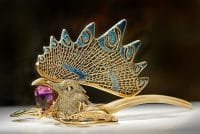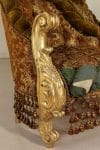Louis XV or Louis XVI style? Here's how to distinguish them
Lo Louis XV style and Louis XVI style they are two artistic currents that influenced the French artistic and cultural world in the eighteenth century, bringing numerous innovations especially in furniture sector.
The two styles are one the consequence of the other, which maintain common characteristics but which also develop their own distinctive traits.
Let's analyze them individually and find out how to distinguish them easily.
The distinctive features of the Louis XV style
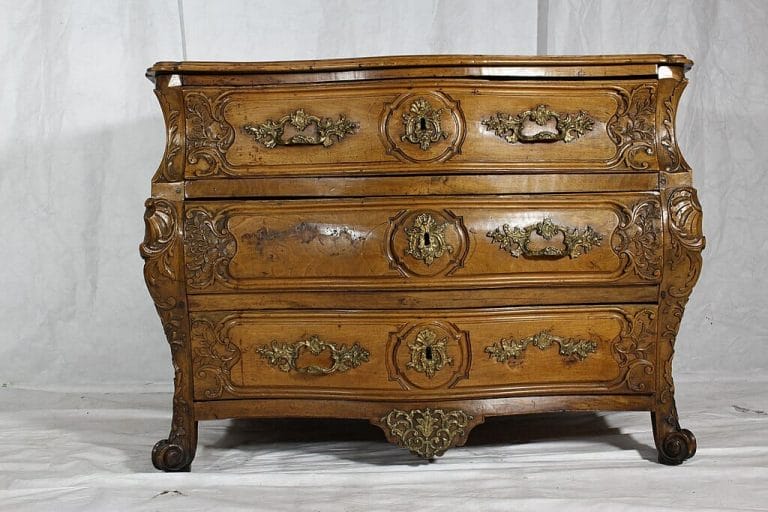
Lo Louis XV style was born in France during the regency, i.e. the years of the first part of the reign of Louis XV ranging from 1710 to approximately 1730.
It is a style that continues to evolve and develop for decades, presenting itself as original and exuberant at the beginning and then becoming more sober and orderly towards the end.
This artistic movement fits perfectly into rococo period: rockery, sharing its elegant shapes, the search for asymmetry and a predilection for fantasy and whim.
At the base of the rococo there are the imagination and the exaltation of the good life and among the decorative elements the rocks, shells, flowers and leaves.
Furthermore, there is no lack of admiration for oriental art, especially Chinese, and a consequent diffusion of the so-called chinoiserie.
Within this frame I Louis XV style it does nothing but take up the characteristics of rococo by reworking them and giving life to a subset with its own distinctive features.
Here the rococo appears in fact as subdued and simplified, where the initial hardness and agitation of the sinuous curves give way to a wider and more peaceful rhythm.
We free ourselves from the exaggerations of rockery to give space to a perfected Louis XV style which provides a more moderate use of curved lines and less imaginative ornaments.
In the furnishings it is given the priority to comfort and practicality and great development they have multifunctional furniture such as writing or sewing tables.
The furniture is small in size, simple and light and is made in different variations to respond perfectly to different occasions of use.
Louis XVI style: the main characteristics
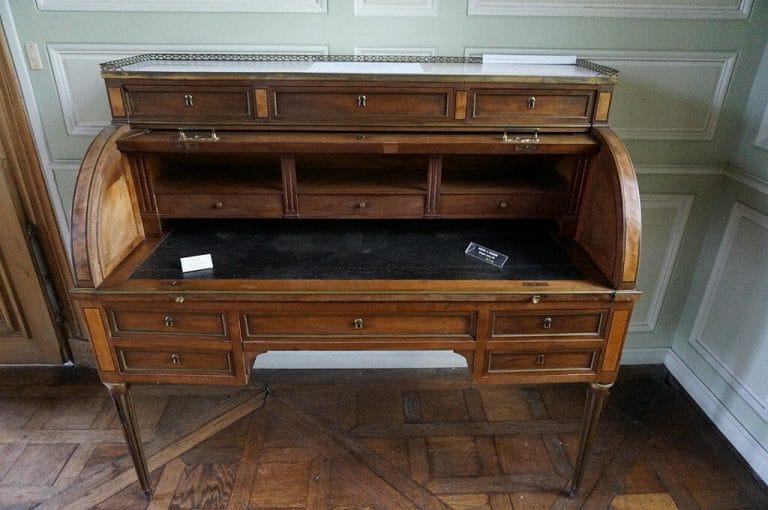
Lo Louis XVI style it established itself in France around 1765, preceding the reign of King Louis XVI by a few years.
It developed in parallel with the affirmation of Neoclassicism and a return, therefore, to sober, straight and geometric lines typical of Greco-Roman classicism.
It is precisely in this period, in fact, that the archaeological sites of Pompeii and Herculaneum were discovered and brought to light, spreading an enthusiasm for the ancient taste that overwhelmed the Europe of the time.
They abandon themselves quickly the excesses and pomp of Rococo, seeking instead a composure of forms and a new ideal of perfection and aesthetics.
The furniture is characterized by sharpness of volumes, the execution is refined and with attention to the smallest details and the most used materials are exotic woods like ebony and mahogany.
The most depicted themes derive from the classical repertoire and there is therefore a large representation of cupids, mythological figures and natural elements.
Furthermore, artists and craftsmen are influenced by the great charm of the mosaics and frescoes found in archaeological sites, and this is why they are often re-proposed during this period.
In furnishings there is extensive use of tassels, cords and drapery, but also of medallions containing cameos or musical trophies.
Light colors such as white and blue prevail, avoiding intense tones, extravagance and contrasts.
Louis XV or Louis XVI style? Similarities and differences
Comparing the two styles, then, what are the main differences? How is it possible to recognize the artistic movement to which one belongs by observing a piece of furniture?
here are the distinctive features that characterize the furniture:
| Louis XV style | Louis XVI style |
| The legs of the furniture are shaped or resemble the shape of an animal paw with the typical S-line. | The furniture legs are straight and stepped. |
| The lines and shapes are mainly curved and soft, playing on asymmetries. | The shapes are classically inspired and are tidy and geometric. |
| To decorate, extensive use is made of natural elements such as shells, leaves, flowers and rocks. | The focus is on ribbons or floral decorations. |
| The furniture has rounded shapes. | The furniture has very clear volumes. |
| Multifunctional furniture such as tables that become dressing tables, desks or sewing shelves are born. | Showcases were created to display small precious objects and small tables for board games became popular in the living room. |
| In the bedroom the most common beds are canopy beds, which are also popular in a smaller variant called Polish style. | The beds, inspired by classical antiquity, have uprights made up of fluted columns or pillars sculpted in gilded bronze or carved in wood. |
| The armchairs are small, comfortable and have a low back and are covered with different types of decorated fabrics. | The armchairs have backrests with straight lines and lightness and elegance are exalted at the expense of comfort. |
Images
https://commons.wikimedia.org/wiki/File:Bureau_%C3%A0_cylindre_Louis_XVI_1488.JPG
G.Garitan, CC BY-SA 3.0 https://creativecommons.org/licenses/by-sa/3.0, via Wikimedia Commons
https://commons.wikimedia.org/wiki/File:Commode_tombeau_style_Louis_XV,_18e,_rinceau,_feuillage,_coquille_1.JPG
https://upload.wikimedia.org/wikipedia/commons/e/ed/Commode_tombeau_style_Louis_XV%2C_18e%2C_rinceau%2C_feuillage%2C_coquille_1.JPG




